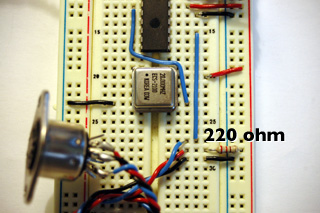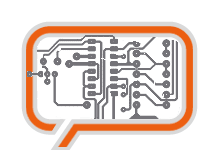A weblog focused on interesting circuits, ideas, schematics and other information about microelectronics and microcontrollers.
E-books
Disclaimer
Because I have not tested all electronic circuits mentioned on this pages, I cannot attest to their accuracy; therefore, I do not provide a warranty of any kind and cannot be held responsible in any manner.
MIDI for microcontrollers
MIDI, or Musical Instrument Digital Interface, is a specification for a communications protocol between digital synthesizers and other digital music devices. It was developed to be as simple and general as possible, to give synthesizer manufacturers as much flexibility as possible, yet still have their instruments talk to each other without communication problems. Here is a simple circuit for MIDI output that works well with Wiring or Arduino, the PIC microcontrollers, the BS-2, and the BASIC ATOM Pro24.

MIDI is a serial communications protocol, operating at 31,250 bits per second. Each byte has 8 bits, plus a start bit and a stop bit. It operates at 5 volts DC. The standard MIDI connector is a 5-pin DIN connector, and usually all connectors on the device are female, and both ends of a MIDI cable are male. There is a specific wiring schematic for MIDI input and outputs.
